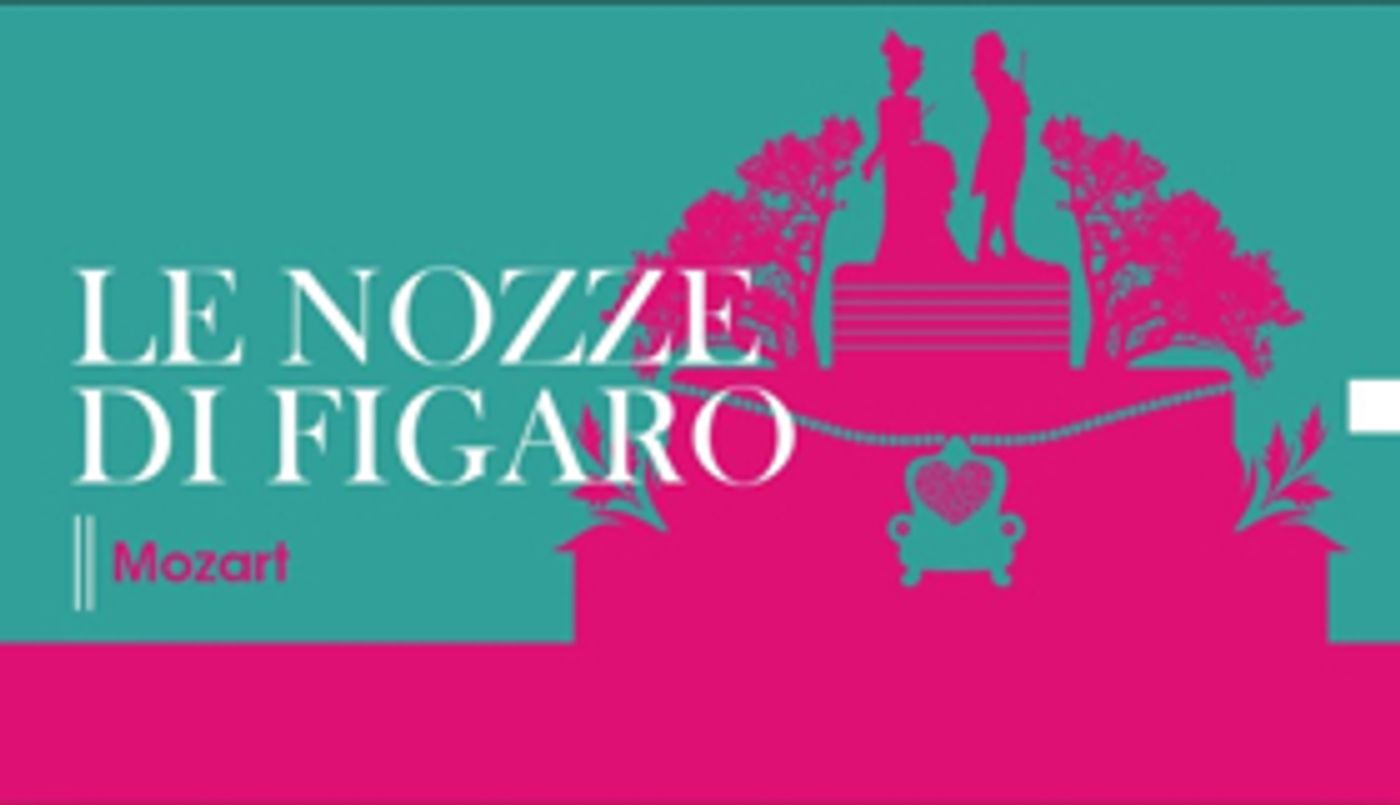Review: OPERA GRAND AVIGNON Presents LE NOZZE DI FIGARO

Avignon's Opéra Confluence is a challenging space, located some kilometers outside the town center near the TGV train station. It was recently constructed as a temporary theatre space while the city 19th century opera house undergoes significant restoration. The interior of the space resembles an exposed wood warehouse with red chairs. At the far end of the theatre, rather than the proscenium filling out the audience view, a yawning black screen fills the space, with the center third cut out for the performance. This scenic letterbox effect, coupled with the added distance made by the pit orchestra, makes dramatic intimacy and scenic delicacy difficult. Opéra Grand Avignon's production of Mozart's Le Nozze di Figaro, under the stage direction of Stephan Grögler, turned what is at times a distant screen, into an enchanting diorama in which Grögler sure-footedly welcomes the enchanting tonal and aesthetic contradictions of the 18th century opera.
Based on the Beaumarchais play La Folle Journée ou Le Mariage de Figaro, Mozart, in collaboration with librettist Lorenzo De Ponte, wrote an Italian, and less politically controversial adaptation. Nozze takes place over the course of a day at Conte Almaviva's estate near Seville. His servant, Figaro, is to marry a servant girl, Susanna, who is the maid to the countess. The count is jealous and angry at Figaro and attempts to have Figaro married off to a much older woman, and tries to sleep with Susanna. The countess, Susanna, a young page boy, and Figaro all conspire against the count. While this is a comedy, much of the conflict regarding the subjugation of women, which would have previously been played for laughs, has been given more grounded emotional stakes.
Maria Miró, as Countessa Almaviva, received a grand ovation for her velveteen Dove Sono. The countess is a character whose concerns could easily be dismissed as the whims of the wealthy, though, in this performance, her hurt melancholic gaze at Conte Almaviva is the final image of the play. In this moment she has pardoned a man who has wronged her relentlessly, though, despite this forgiveness, it's clear a journey of healing will have to be undertaken. Norma Nahoun is both musically towering and dramatically grounded. She offers the libretto a joyous comedic immediacy. Albane Carrère's Voi Che Sapete was similarly greeted with mid-performance ovations. As the spurned count, David Lagares is visually imposing. As Figaro, Yoann Dubruque is a charming and aloof figure. His voice is warm and welcoming, and his presumed "Bugs Bunny" like calm is well equaled with Nahoun's Suzanne. Finally, the Orchestre Régional Avignon-Provence and Choeur de l'Opéra Grand Avignon undergird the full experience into a thriving artistic whole.
The design elements of the production span from the 18th to mid 20th century, though nothing sticks out as particularly analogous. Costumes by Véronique Seymat toe the line between the aristocratic and the burlesque, much like the opera itself. Gaëten Seurre's sublime lighting design gives depth to the distant stage, offering the scenic action the fullness and delicacy of a doll's house. Scenic elements by director Stephan Grögler, in collaboration with painter and decorator Phanuelle Mognetti, have simple silhouettes and graspable concepts, while allowing plenty of room for scenic invention. Bolstered by stellar performances, this Nozze is at once dignified and vibrant, enthusiastic and mature.
Image: Poster Opéra Grand Avignon
Reader Reviews
Videos

